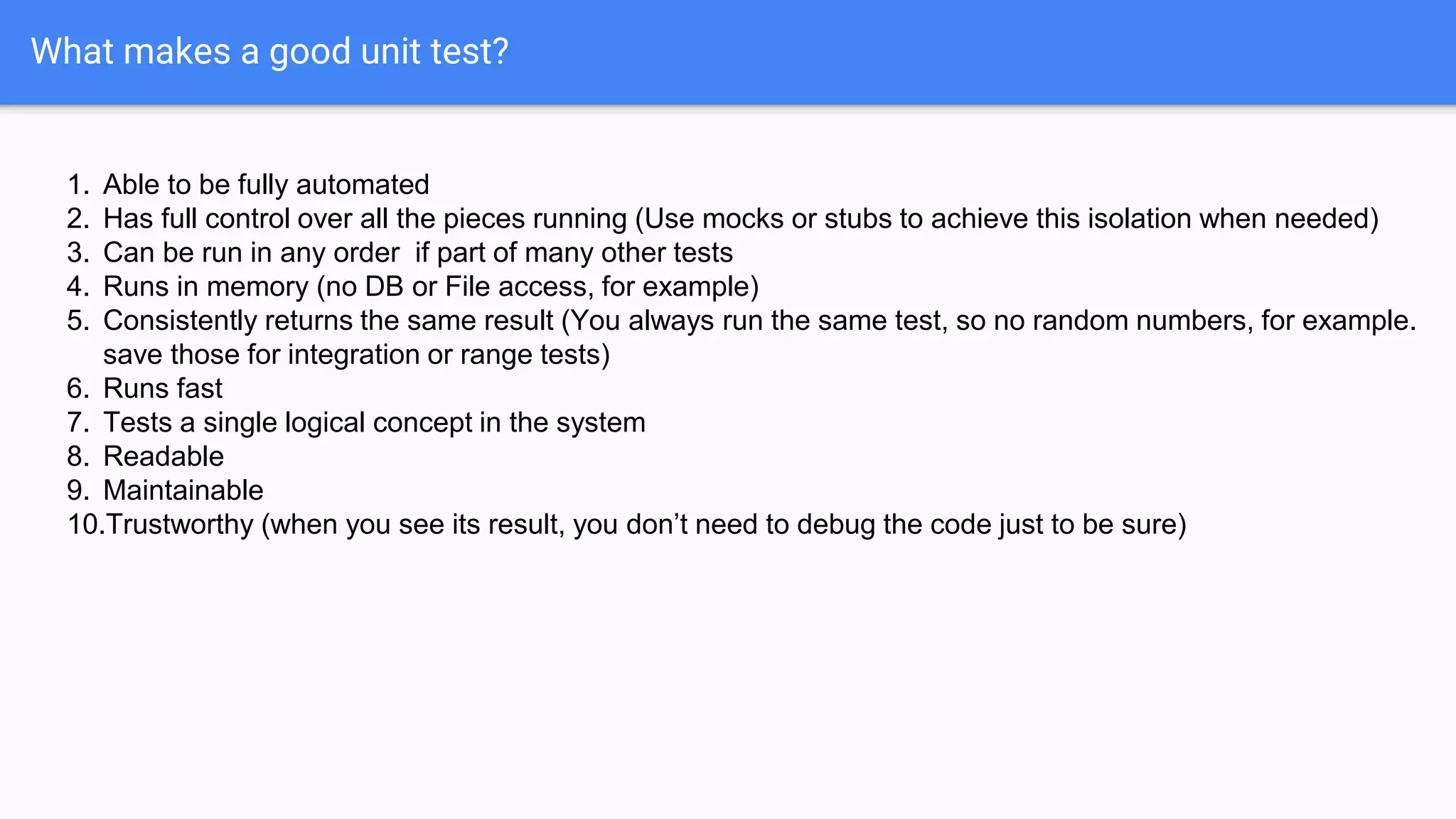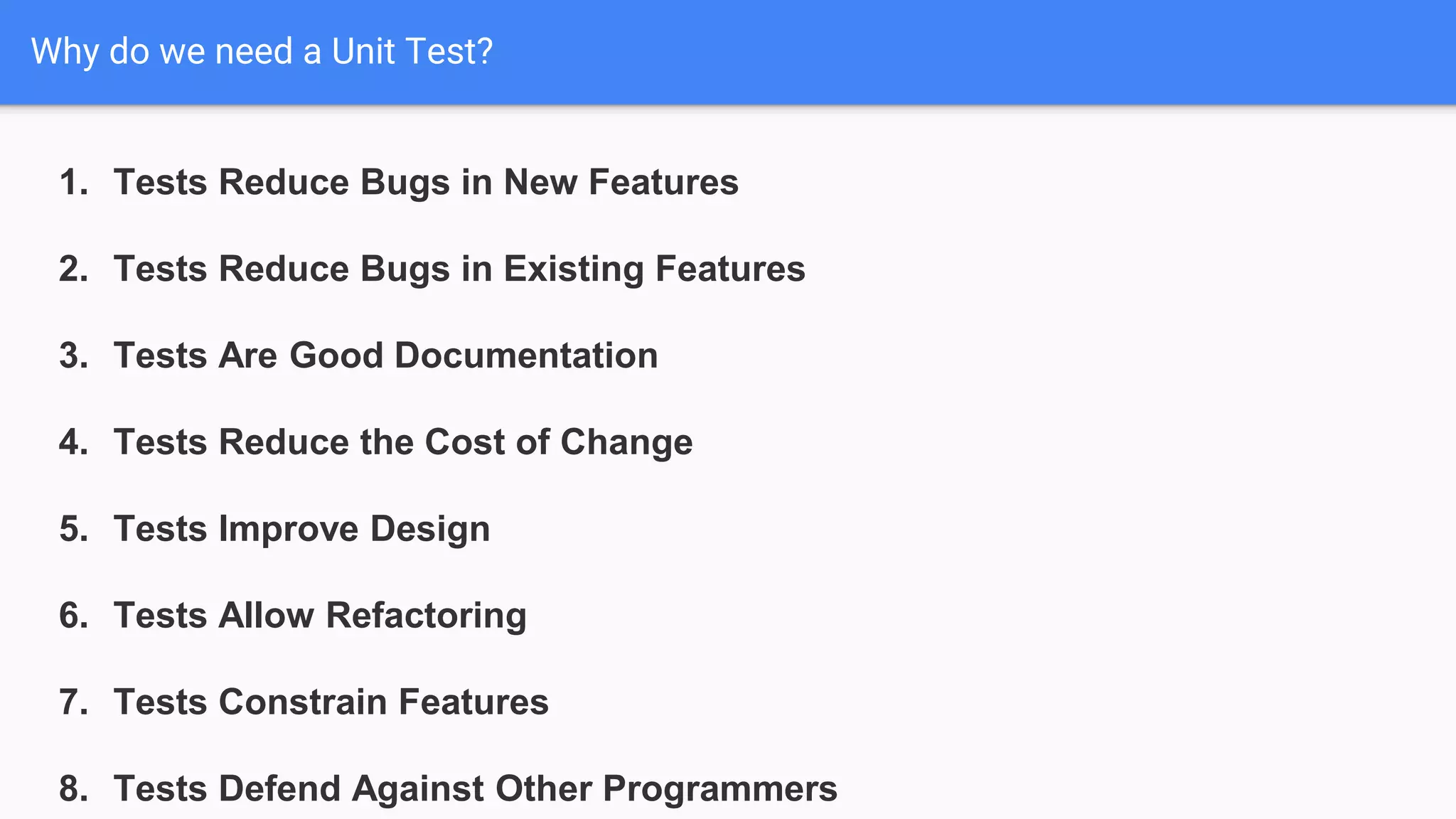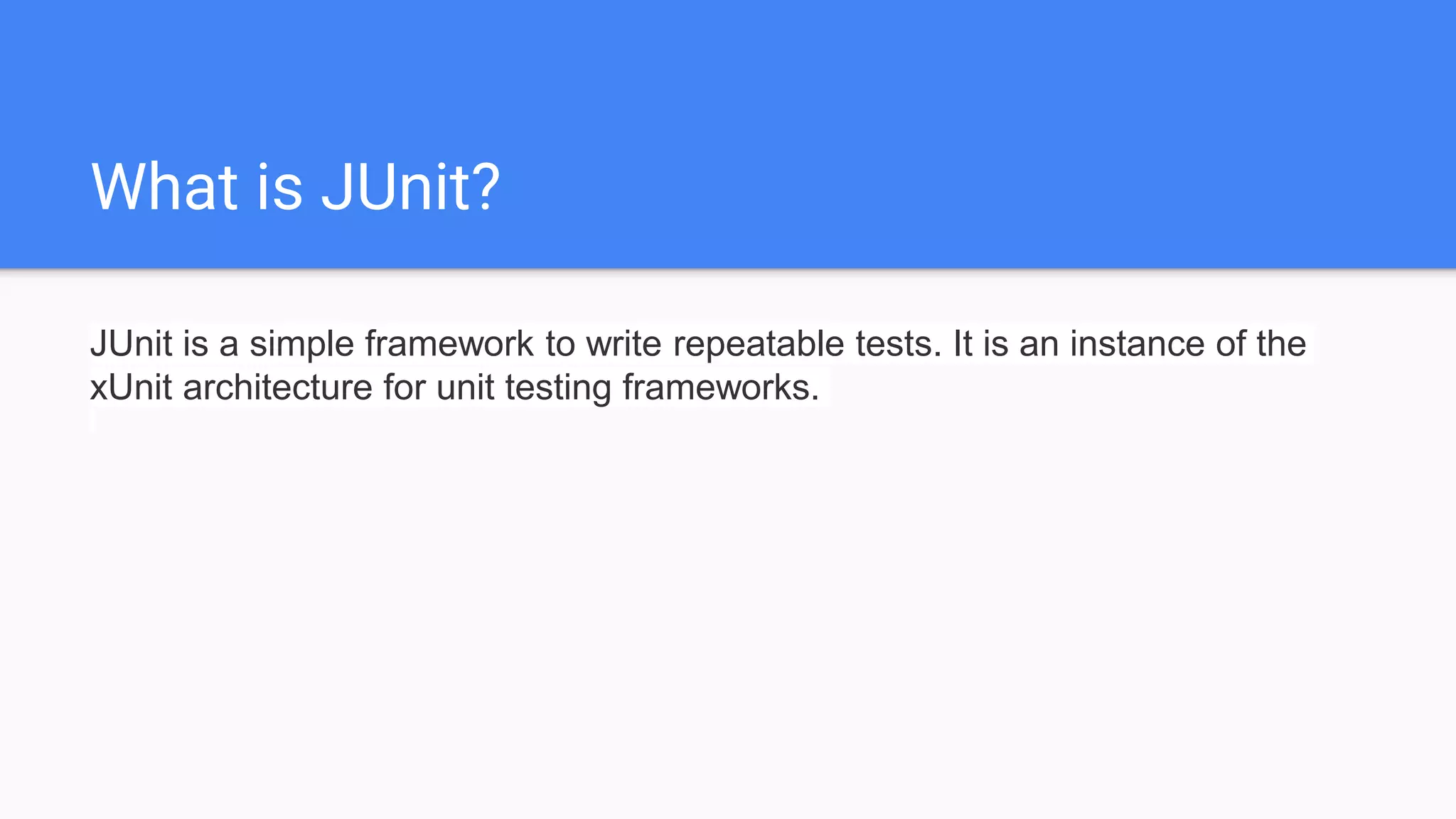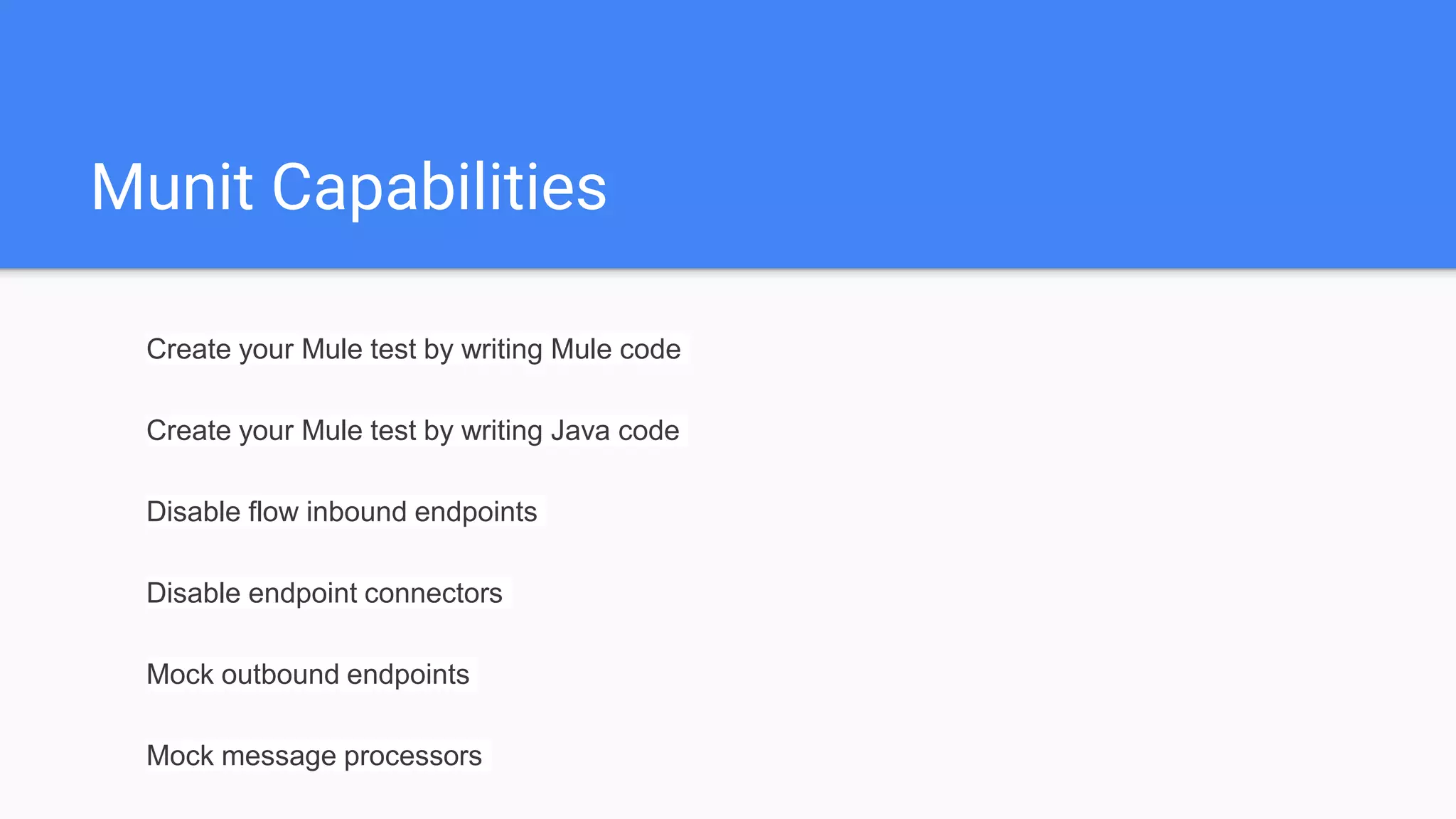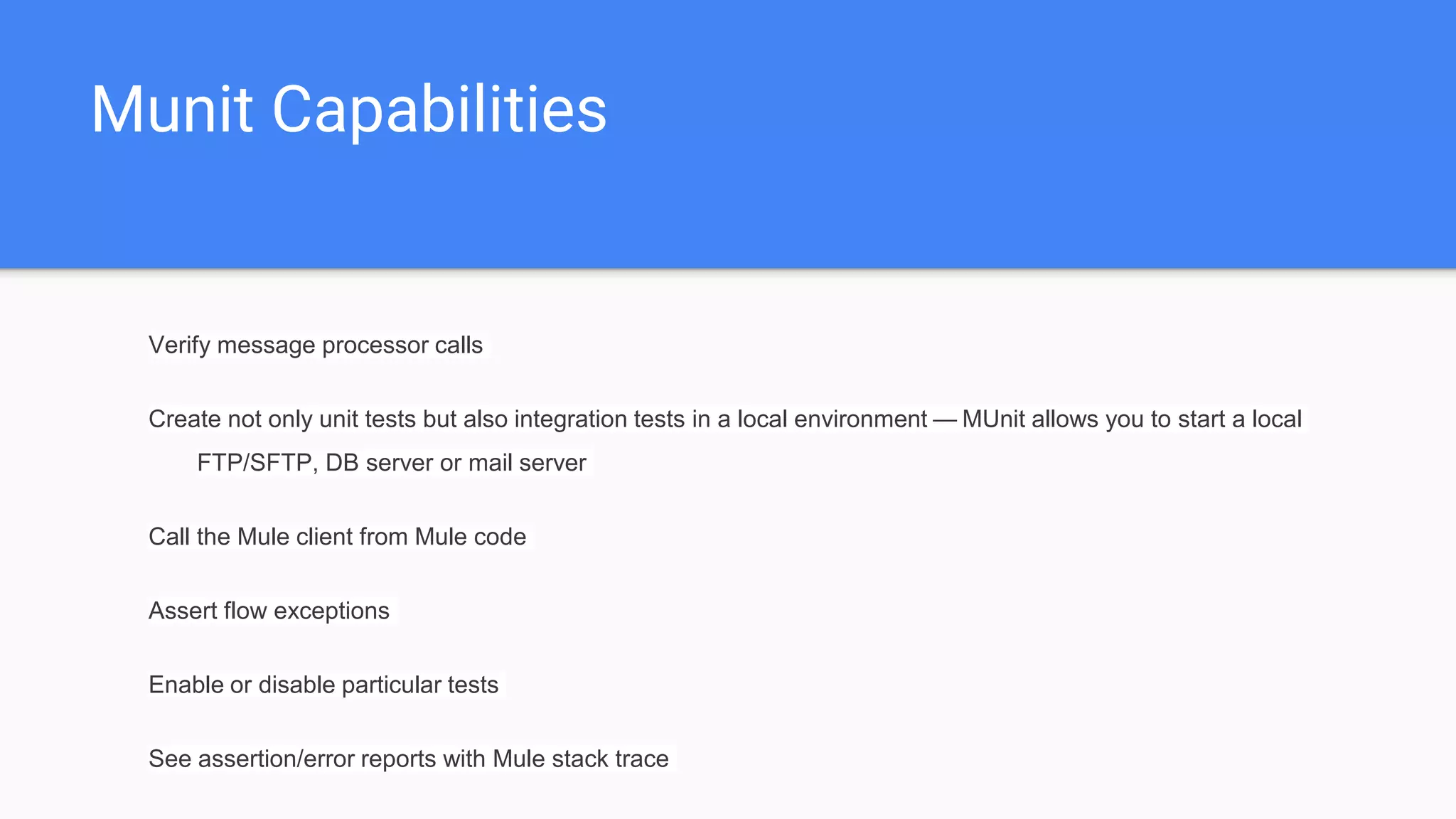This document provides an introduction to unit testing Mule flows using Munit. It defines what a unit test is and characteristics of good unit tests. Reasons for writing unit tests are given such as reducing bugs and improving design. Dependencies for Munit unit testing like JUnit and Munit framework are described. Capabilities of Munit like mocking message processors and outbound endpoints are outlined. Finally, resources credited for the information are provided.


